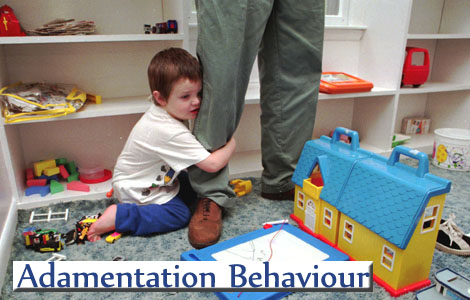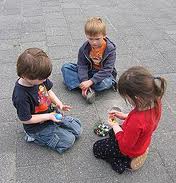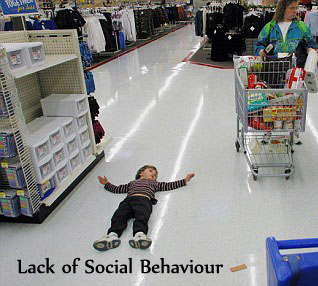General Introduction
In all over world that Autism creates major challenges in well equipped medical field. Identification of the autistic child among from the special children is more difficult due to the similarity of signs and symptoms. Treatment and special training are varied from every individual but no one concern the importance for this individual care. In general, medical practitioners have the opinion as controlling of autistic individual is a difficult role. Many specialists have taken efforts to control the signs and symptoms of Autism, but they could achieve only about 20 to 40 per cent. Main reason for their failure is lack of team work.
In our organization, professionals who share and spend more time with clients and the trainers who follow the instructions of chief practitioner and the parents also following the instructions for the improvement of their children.� Here we work with team spirit and we could achieve the improvement level even up to 90%.� Our vidial group mainly focuses for one to one teaching every individual to promote independent life.
Introduction:
Autism is a neurological disorder that affects the development of a child's social, language and communication skills. A child with autism experiences significant developmental delays in areas such as speech and cognitive skills. The primary goals of treatment are to minimize the core features and associated deficits, maximize functional independence and quality of life, and alleviate family distress. Facilitating development and learning, promoting socialization, reducing maladaptive behaviors, and educating and supporting families can help accomplish these goals. Ideally, interventions should help mitigate the core features of ASDs, which include impairment in social reciprocity, deficits in communication, and restricted, repetitive behavioral repertoire.
The Diagnostic Statistical Manual, Fourth Edition (DSM-IV), the standard classification system of American mental health professionals, categorizes autism as one of five pervasive development disorders (PDD). The five PDD disorders are autism, Asperger's Syndrome, Rett's Syndrome, childhood disintegrative disorder and pervasive development disorder-not otherwise specified. The DSM-IV links the disorders because they all affect a child's normal development of communication, speech and social skills.
ASD is defined by a certain set of behaviors that can range from the very mild to the severe. The following possible indicators of ASD were identified,
Possible Indicators of Autism Spectrum Disorders
- Does not babble, point, or make meaningful gestures by 1 year of age
- Does not speak one word by 16 months
- Does not combine two words by 2 years
- Does not respond to name
- Loses language or social skills
Some Other Indicators
- Poor eye contact
- Doesn't seem to know how to play with toys
- Excessively lines up toys or other objects
- Is attached to one particular toy or object
- Doesn't smile
- At times seems to be hearing impaired
Social Symptoms
Some children diagnosed with ASD,
- Have tremendous difficulty learning to engage in the give-and-take of everyday human interaction.
- To Prefer being alone
- Resist attention or passively accept hugs and cuddling
- Disruptive and physically aggressive at times
- Tendency to "lose control," particularly when they're in a strange or overwhelming environment, or when angry and frustrated.
- At times break things, attack others, or hurt themselves. In their frustration, some bang their heads, pull their hair, or bite their arms.

Communication Difficulties
Some children diagnosed with ASD
- Remain mute throughout their lives. Some infants who later show signs of ASD coo and babble during the first few months of life, but they soon stop. Others may be delayed.
- seem unable to combine words into meaningful sentences. Some speak only single words, while others repeat the same phrase over and over. Some ASD children parrot what they hear, a condition called echolalia
- have great difficulty in sustaining a conversation.
- inability to understand body language, tone of voice, or “phrases of speech of others.
Repetitive Behaviors
- Although children with ASD usually appear physically normal and have good muscle control, odd repetitive motions may set them off from other children. These behaviors might be extreme and highly apparent or more subtle.
- Some children and older individuals spend a lot of time repeatedly flapping their arms or walking on their toes. Some suddenly freeze in position.
- spend hours lining up their cars and trains in a certain way, rather than using them for pretend play
- A slight change in any routine�in mealtimes, dressing, taking a bath, going to school at a certain time and by the same route�can be extremely disturbing.
Problems That May Accompany ASD
Sensory problems. In ASD, the brain seems unable to balance the senses appropriately. Some ASD children are oblivious to extreme cold or pain. An ASD child may fall and break an arm, yet never cry. Another may bash his head against a wall and not wince, but a light touch may make the child scream with alarm.
Mental retardation. Many children with ASD have some degree of mental impairment.
Seizures. One in four children with ASD develops seizures
The Diagnosis of Autism Spectrum Disorders
Although there are many concerns about labeling a young child with an ASD, the earlier the diagnosis of ASD is made, the earlier needed interventions can begin. Evidence over the last 15 years indicates that intensive early intervention in optimal educational settings (Special training with one to one teaching method) for at least 2 years during the preschool (2 � 5 years) years results in improved outcomes in most young children with ASD.
Treatment Options
Multi Level Therapy combined with well structured environment is best treatment package for all children with ASD. One point that most professionals agree on is that early intervention is important; another is that most individuals with ASD respond well to highly structured, specialized programs.
Occupational Therapy and Sensory Integration Therapy
 Occupational therapists design and assist in promoting development of play skills, modifying classroom materials and routines to improve attention and organization, and providing prevocational training.Traditional occupational therapy often is provided to promote development of self-care skills (eg, dressing, manipulating fasteners, using utensils, personal hygiene) and academic skills (eg, cutting with scissors, writing). Sensory integration (SI) therapy often is used alone or as part of a broader program of occupational therapy for children with ASDs. The goal of SI therapy is not to teach specific skills or behaviors but to remediate deficits in neurologic processing and integration of sensory information to allow the child to interact with the environment in a more adaptive fashion. Unusual sensory responses are common in children with ASDs, but there is not good evidence that these symptoms differentiate ASDs from other developmental disorders, and the efficacy of SI therapy has not been demonstrated objectively. Available studies are plagued by methodologic limitations, but proponents of SI note that higher-quality SI research is forthcoming. "Sensory" activities may be helpful as part of an overall program that uses desired sensory experiences to calm the child, reinforce a desired behavior, or help with transitions between activities. Following methods are used to achieve better prognosis.
Occupational therapists design and assist in promoting development of play skills, modifying classroom materials and routines to improve attention and organization, and providing prevocational training.Traditional occupational therapy often is provided to promote development of self-care skills (eg, dressing, manipulating fasteners, using utensils, personal hygiene) and academic skills (eg, cutting with scissors, writing). Sensory integration (SI) therapy often is used alone or as part of a broader program of occupational therapy for children with ASDs. The goal of SI therapy is not to teach specific skills or behaviors but to remediate deficits in neurologic processing and integration of sensory information to allow the child to interact with the environment in a more adaptive fashion. Unusual sensory responses are common in children with ASDs, but there is not good evidence that these symptoms differentiate ASDs from other developmental disorders, and the efficacy of SI therapy has not been demonstrated objectively. Available studies are plagued by methodologic limitations, but proponents of SI note that higher-quality SI research is forthcoming. "Sensory" activities may be helpful as part of an overall program that uses desired sensory experiences to calm the child, reinforce a desired behavior, or help with transitions between activities. Following methods are used to achieve better prognosis.
(a) Applied Behavior Analysis
 Applied behavior analysis (ABA) is the process of applying interventions that are based on the principles of learning to systematically change behavior and to demonstrate that the interventions used are responsible for the observable improvement in behavior. ABA methods are used to increase and maintain desirable adaptive behaviors, reduce interfering maladaptive behaviors or narrow the conditions under which they occur, teach new skills, and generalize behaviors to new environments or situations.
Applied behavior analysis (ABA) is the process of applying interventions that are based on the principles of learning to systematically change behavior and to demonstrate that the interventions used are responsible for the observable improvement in behavior. ABA methods are used to increase and maintain desirable adaptive behaviors, reduce interfering maladaptive behaviors or narrow the conditions under which they occur, teach new skills, and generalize behaviors to new environments or situations.
(b) Structured Teaching
The TEACH method emphasizes structure and has come to be called "structured teaching." Important elements of structured teaching include organization of the physical environment, predictable sequence of activities, visual schedules, routines with flexibility, structured work/activity systems, and visually structured activities (full time engagement).
(c) Developmental Models
Developmental models have design approaches to address the deficits. The Denver model, for example, is based largely on remediating key deficits in imitation, emotion sharing, theory of mind, and social perception by using play, interpersonal relationships, and activities to foster symbolic thought and teach the power of communication.
(d) Speech Communication Method (Speech and Language Therapy)
A variety of approaches like� Speech Communication method have been reported to be effective in producing gains in communication skills in children with ASDs.� It may vary that individual's problem.
(e) Dietary and Other Interventions
Dietary interventions are based on the idea that 1) food allergies cause symptoms of autism, and 2) an insufficiency of a specific vitamin or mineral may cause some autistic symptoms.
A diet that some parents have found was helpful to their autistic child is a gluten-free, casein-free diet. Gluten is a casein-like substance that is found in the seeds of various cereal plants�wheat, oat, rye, and barley. Casein is the principal protein in milk. Since gluten and milk are found in many of the foods we eat, following a gluten-free, casein-free diet is difficult.
A supplement that some parents feel is beneficial for an autistic child is Vitamin B6, taken with magnesium (which makes the vitamin effective).
Medications are often used to treat behavioral problems, such as aggression, self-injurious behavior, and severe tantrums that keep the person with ASD from functioning more effectively at home or school.
Important principles and components of effective early childhood intervention for children with ASDs include the following:
- entry into intervention as soon as an ASD diagnosis is seriously considered rather than deferring until a definitive diagnosis is made;
- provision of intensive intervention, with active engagement of the child with full time monitoring their behaviours, in systematically planned, developmentally appropriate educational activities designed to address identified objectives;
- low student-to-teacher ratio to allow sufficient amounts of 1-on-1 time and small-group instruction to meet specific individualized goals;
- inclusion of a family component (including parent training as indicated);
- promotion of opportunities for interaction with typically developing peers to the extent that these opportunities are helpful in addressing specified educational goals;
- ongoing measurement and documentation of the individual child's progress toward educational objectives, resulting in adjustments in programming when indicated;
- incorporation of a high degree of structure through elements such as predictable routine, visual activity schedules, and clear physical boundaries to minimize distractions;
- implementation of strategies to apply learned skills to new environments and situations (generalization) and to maintain functional use of these skills; and
- use of assessment-based curricula that address:
- functional, spontaneous communication;
- social skills, including joint attention, imitation, reciprocal interaction, initiation, and self-management;
- functional adaptive skills that prepare the child for increased responsibility and independence;
- reduction of disruptive or maladaptive behavior by using empirically supported strategies, including functional assessment;
- cognitive skills, such as symbolic play and perspective taking; and
Guidelines for Parents of Children with Autism
 Do not feel guilty: Most parents find it hard to believe and accept a diagnosis of Autism. Let guilt that you may have inadvertently caused the Autism not adds to the burden of management. You may harm yourself, and your child may not get the care he deserves.
Do not feel guilty: Most parents find it hard to believe and accept a diagnosis of Autism. Let guilt that you may have inadvertently caused the Autism not adds to the burden of management. You may harm yourself, and your child may not get the care he deserves.
Do not overprotect your child: Overprotection may unwittingly interfere with his growth and development.
Say to yourself: ‘This child needed me and nobody else’. Accept that God gave you your child because he knew you would look after him like no one else.
Be rational: Don’t fall prey to misguided advice and the promise of quick cures. Be guided by your doctor.
Do not ignore your spouse and your other child(ren): Since your special child needs a lot of attention, your husband and other children may start feeling neglected. An understanding husband will respect your feelings and will support you, but you must not forget that he is also human and that your other children also need you.
Involve your other children in the care of the special child: No parent lives forever and your child may outlive you.
Education and training are vital: Let your child start getting help from experts in the field as soon as possible. Early intervention can make a lot of difference in the ultimate outcome.
�
A team of experts will first try to find the possible cause of the Autism and then plan the management of your child. They will also discuss the ultimate prognosis and answer any queries that you have about the possibility of your future children getting affected.
Consider getting your child admitted to a school for normal children: After taking training and treatment in special training center for 2 � 3 years proportional with their age and the severity that Let the team of experts decide if your child should be admitted to a school for normal children.
Do attend to the general health of the child: Make sure your child gets a nourishing diet, proper exercise, enough sleep and a friendly environment. Avoid foods that will make him fat. Also make sure that he gets proper dental care. Some of these children may not chew their food well and extra sugar may cause caries of the teeth, as well as add to his weight.
Drugs are often not helpful: There is no ‘brain tonic’ that helps these children. However, the experts may prescribe some drug(s) for tackling certain specific problems.
Prefer home care to care in an institution:
More and more people are coming to realise that special children are better looked after at home rather than in an institution. However, situations can arise when parents find it impossible to cope with a severely retarded child and institutionalised care may become necessary.
Fear of Sexual Abuse
This children should be handled by only parents. Try to avoid handling the male autistic children with other persons due to the possibility of sexual abusing.
If you have a female child with Autism, be extra careful about the possibility of the child being sexually abused. Avoid leaving the child alone with people who may take advantage of her unawareness. Discuss the issues of contraception and menstruation with your doctor.
Genetic Counselling
In some cases of Autism, there is a possibility that the next child may have a similar condition. Discuss this with your doctor. Sometimes, the help of a genetic counsellor is needed in such cases.
Prognosis
If we intervened very earlier with proper management there is possible to attain better prognosis. May some individuals with Autistic features, particularly those with mild level of Autism, are often ultimately may live independently with supervision.
Moderate autistic children with strict supervision may maintain in the special training center.
Note: Without taking proper treatment and early intervention, children with mild to more severe cases of Autism who are not able to live independently.
